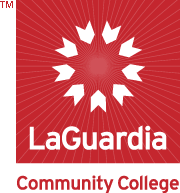Document Type
Assignment
Publication Date
9-2023
Abstract
SCB101 is a non-major biology course. In Fall 2022, the course was designated as an Experiential Learning-LaGuardia Humanitarian Initiative (LHI) course in CUNYFirst. LHI is LaGuardia's experiential learning program that helps students to critically reflect on global issues and develop sustainable solutions in partnership with local and global organizations. For the 2022-2023 academic year, LHI focused on two United Nations Sustainable Development Goals (UNSDG): Goal 2 and Goal 10. UNSDG 2 aims to end hunger, achieve food security, improve nutrition, and promote sustainable agriculture. UNSDG 10 addresses reducing inequality both within and among countries. Thus, I developed an assignment to help students examine food deserts in an urban area with the overall goal being to understand the impact of food deserts in our communities and how they contribute towards perpetuating food insecurities and injustices. Students were encouraged to independently define food deserts and relate the term to urban areas. By the end of the course, students should be able to define food desert, become familiar with mapping and scaling to show food sources in their community, analyze the data obtained to make a rational conclusion regarding food deserts in an urban community. By the end of the course, students should be able to demonstrate the skills necessary to understand and apply scientific concepts such as obesity, and reasoning like data analysis, graphing.
Furthermore, the assignment allows students to further their learning by using statistical data to identify food deserts and explain how populations that live in food deserts are affected both biologically and economically. The assignment also asks students to map their community by showing the location of food places within a 5 mile radius from their homes. After determining the location of food places within their communities, students are asked to consider whether the foods served in these places are healthy.
In the latter part of the semester, students are introduced to human physiology and complete a basal metabolic rate (BMR) lab activity. At the completion of the lab, each student is aware of the amounts of protein, carbohydrates, and fats they need on a daily bases. Having this information at hand, students can plan their daily diets accordingly. Students can use the information obtained in the lab activity to advocate for healthier food options available to them in their communities. This is particularly important for the student/students who find they do not live in a food desert due to the number of fast-food restaurants, bodegas, and delis located in their community. Students will begin to note whether obtaining food from these sources is best for a healthy diet. Finally, students developed an action plan to address the biological and economic impact of food deserts by writing letters to their local, state, or congressional representatives. Students who did not live in a food desert examined the health statistics in their communities.
LaGuardia’s Core Competencies and Communication Abilities
Learning Objectives:
By the end of the course, students should be able to demonstrate the skills necessary to understand and apply scientific concepts and reasoning, such as making observations, testing hypotheses, data analysis, and evaluation. This experiential learning assignment aligns with the learning objective of inquiring about a problem and identifying strategies to address the problem of food insecurity, as mentioned above. Below is a brief outline of the steps implemented to achieve the goals for the assignment:
First, students gathered community demographic data (population size, median income, race/ethnicity). This will help them become more knowledgable with obtaining and synthesizing data from governmental agencies like the United States Census Bureau and Centers for Disease Control. Furthermore, the assignment will allow students to become familiar with their US, state, and local representatives.
Next, students map the location of food sources in their community. Students used a 2-4-mile radius from their home to determine the number of supermarkets, bodegas, dollar stores, and vegetable markets. Identifying accessible food sources allowed students to gain a better understanding of the definition of food desert.
Finally, students synthesized the information obtained in the previous assignments to determine whether they live in a food desert. Students are given two choices on this assignment. If they live in an urban food desert, they can advocate for more supermarkets and restaurants that can bring healthy food options to their community. Thus, writing letters to their local representatives (obtained in assignment #1), students can use the data obtained to support their claim that an urban food desert needs funding to promote a healthier community.
The assignment was used in SCB101, a non-majors biology course. The course fulfills LaGuardia's general education requirement under the Life and Physical Sciences category.
Students enrolled in SCB101: Topics in Biological Sciences are non-majors.
This was a scaffolded assignment done in a 12-week semester. Students completed the first assignment by the end of week 3. The second assignment was due by the end of week 5. The final assignment was due by the end of week 8.
The assignment is worth 15% of the final grade. The assignment is divided into three parts. Scaffolding the assignment will allow students to synthesize the information gathered, thus giving them a chance to share and ask questions as they complete each part. Furthermore, scaffolding will allow students to retain information and use it to build on what they know. Below is a breakdown of each assignment.
Part I – My community’s demographics, local, state, and congressional representatives (2%)
Part II – Mapping my community (5%)
Part III – Action plan and Reflection (8%)
Creative Commons License

This work is licensed under a Creative Commons Attribution-Noncommercial-Share Alike 4.0 License.



Comments
This resource is part of the Learning Matters Assignment Library.